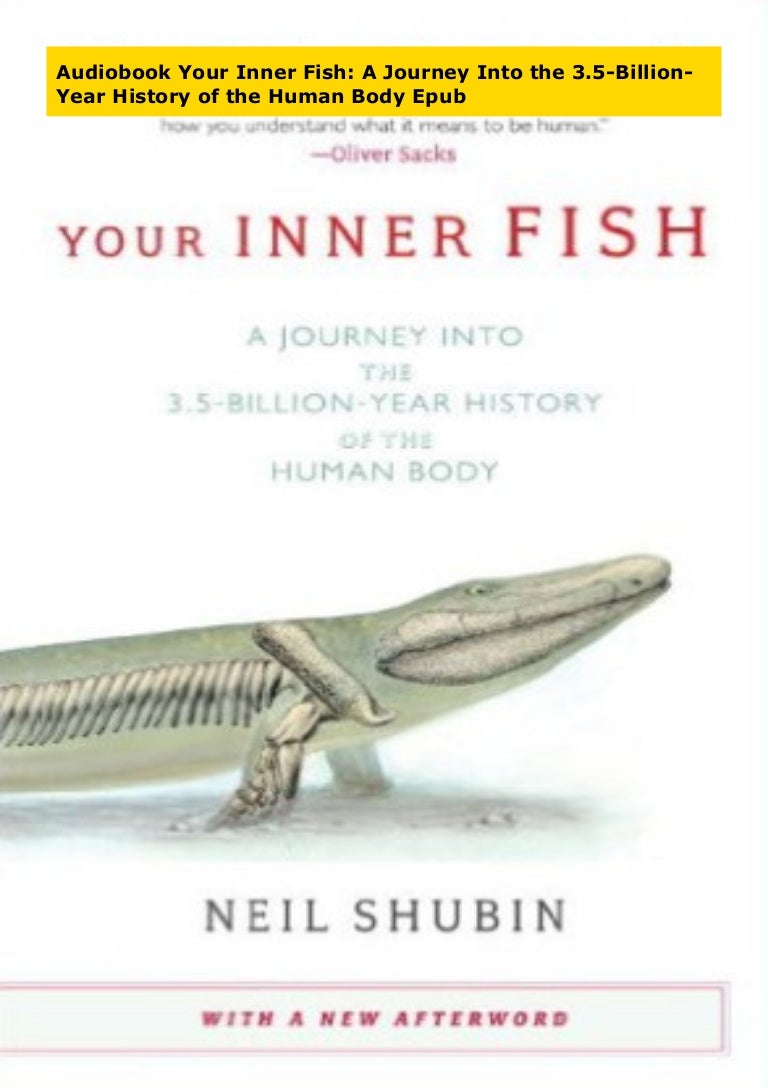

|a Presents the history of evolution by tracing the organs of the human body back millions of years, and, by examining fossils and DNA, argues that parts of the human body resemble those of fish and other creatures. |a Finding an inner fish - Getting a grip - Handy genes - Teeth everywhere - Getting ahead - The best laid (body) plans - Adventures in bodybuilding - Making scents - Vision - Ears - The meaning of it all. |a Includes bibliographical references and index. |a 237 pages : |b illustrations, maps |c 21 cm It’s in our bones: similar bone designs can reveal how different species are related.|a Your inner fish : |b a journey into the 3.5-billion-year history of the human body / |c Neil Shubin. A first episode, out-of the 3 parts long, documentary series, 'Your Inner Fish'.To the full playlist of 'Your Inner Fish', click on the link.

In other words, it had traits from both groups of animals, thus representing a link between life in water and life on land. Tiktaalik had body features similar to a fish, such as scales, fins and webbing, but also a flat head with two eyes on top and a neck – the characteristics of a land-living tetrapod. That is, not until the author’s workgroup discovered the Tiktaalik fossil in a 375-million-year-old rock. But they had no evidence of how the tetrapods developed, since there was a gap in the fossil record: fish fossils had been found in rocks that were older than 380 million years, but nothing else had been found in between these two animal groups. Scientists found fossils of the first land-living tetrapods in rocks dating back no more than 365 million years, meaning that this group of animals appeared 365 million years ago. Let’s take the tetrapods, an animal group comprising amphibians, reptiles, birds and mammals, all of which are characterized by having four limbs, a backbone and lungs.

Moreover, many well-preserved fossils have been found in hot, arid, sparsely populated deserts like the Sahara, indicating that they were once full of water and life.Īnd so, layers of rocks and the fossils they contain can expose the evolutionary development of different species and animal groups because the order of the layers always reflects their age. But fossils have another significance: they help us understand our planet’s past and the creatures that lived a long time ago.Īfter all, sea shells have been found on Mount Everest – evidence that an ocean once existed there – and fossils from warm-adapted animals have been found in the icy Arctic, proof that the region once had a tropical climate. Fossil fuels are very important for meeting the high energy demand in our modern society.


 0 kommentar(er)
0 kommentar(er)
